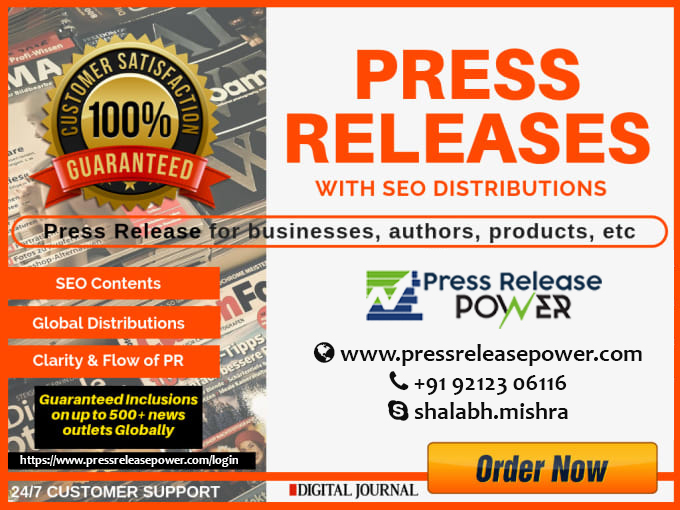How to Launch a Product-Led SEO Strategy
In the dynamic world of digital marketing, integrating a product-led approach into your SEO strategy can yield impressive results. A product-led SEO strategy focuses on optimizing your content and website around your product's unique value propositions, thereby attracting and converting high-intent users. Start by identifying key product features and benefits that resonate with your target audience. Develop content that highlights these aspects and aligns with search intent. Utilize on-page SEO techniques like keyword optimization, meta descriptions, and engaging visuals. Additionally, leverage off-page strategies such as link-building and partnerships to enhance visibility. Regularly analyze performance metrics to refine and adapt your strategy for continuous improvement. Embrace this approach to position your product as a leader in its category and drive meaningful traffic to your site.
Launching a product-led SEO strategy involves aligning your SEO efforts with your product's unique value propositions to drive organic traffic, enhance user engagement, and ultimately, boost conversions. This approach integrates product development and marketing, leveraging the product’s features and benefits to create valuable, search-optimized content. Here’s a comprehensive guide on how to effectively launch a product-led SEO strategy.
Understanding the Product-Led SEO Strategy
A product-led SEO strategy revolves around using your product’s unique aspects to inform and guide your SEO efforts. Unlike traditional SEO strategies that might focus primarily on keyword rankings or backlinks, a product-led approach emphasizes the value and benefits your product offers. This means your SEO content and tactics are directly tied to the strengths and features of your product, aiming to attract and convert users who are actively searching for solutions that your product provides.
Defining Your Product's Unique Value Proposition
To build an effective product-led SEO strategy, start by clearly defining your product's unique value proposition (UVP). The UVP should highlight what makes your product stand out from competitors. It should address key customer pain points and explain how your product solves these issues better than alternatives. This definition will serve as the foundation for your SEO content and campaigns, guiding your keyword research and content creation processes.
Conducting Thorough Keyword Research
Keyword research is critical in any SEO strategy, but in a product-led approach, it should be closely aligned with your product’s features and benefits. Begin by identifying keywords that potential customers are using to search for solutions your product offers. Focus on both high-intent keywords that indicate a readiness to purchase and long-tail keywords that reflect specific queries related to your product’s features. Use tools like Google Keyword Planner, SEMrush, and Ahrefs to discover relevant keywords and analyze their search volume, competition, and relevance.
Creating Product-Centric Content
With your keyword research in hand, create content that directly relates to your product’s features and benefits. This could include blog posts, case studies, how-to guides, and product comparisons. The content should provide valuable information that addresses common questions and problems your target audience faces. Ensure that each piece of content highlights how your product solves these issues and includes relevant keywords in a natural, engaging manner.
Optimizing Product Pages for SEO
Your product pages are a key component of your product-led SEO strategy. These pages should be optimized to rank highly in search engines and provide a clear, compelling description of your product’s benefits. Key optimization elements include:
- Title Tags and Meta Descriptions: Craft unique and descriptive title tags and meta descriptions for each product page, incorporating relevant keywords to improve click-through rates.
- Product Descriptions: Write detailed product descriptions that highlight key features, benefits, and use cases. Use keywords naturally and include customer testimonials or reviews if possible.
- Images and Alt Text: Optimize product images with high-quality visuals and descriptive alt text that includes relevant keywords. This not only helps with SEO but also improves user experience.
Building High-Quality Backlinks
Backlinks remain a crucial factor in SEO success. Focus on acquiring high-quality backlinks from authoritative sources within your industry. Strategies to build backlinks include:
- Guest Blogging: Write guest posts for reputable blogs or websites in your industry, including links back to your product pages.
- Influencer Partnerships: Collaborate with influencers who can review or mention your product on their platforms, driving traffic and generating backlinks.
- Content Promotion: Share your content on social media and industry forums to increase its visibility and attract backlinks from other websites.
Leveraging Product Reviews and Testimonials
Product reviews and testimonials can significantly impact your SEO efforts. Encourage satisfied customers to leave reviews on your website, third-party review sites, and social media platforms. Positive reviews not only build credibility and trust but also contribute to better search engine rankings. Ensure that reviews and testimonials are visible on your product pages and incorporate relevant keywords where appropriate.
Implementing Schema Markup
Schema markup is a type of structured data that helps search engines understand the content on your website. Implementing schema markup on your product pages can enhance search engine results with rich snippets, such as star ratings, pricing information, and product availability. This can improve click-through rates and provide users with more detailed information about your product directly in search results.
Monitoring and Analyzing SEO Performance
To ensure the effectiveness of your product-led SEO strategy, continuously monitor and analyze your SEO performance. Use tools like Google Analytics, Google Search Console, and SEO platforms to track key metrics such as organic traffic, keyword rankings, and conversion rates. Regularly review your SEO data to identify areas for improvement and make data-driven adjustments to your strategy.
Iterating and Improving Your Strategy
SEO is an ongoing process, and a product-led approach requires continual refinement. Based on your performance data, make necessary adjustments to your content, keyword targeting, and optimization tactics. Stay updated with SEO trends and algorithm changes to ensure that your strategy remains effective and aligned with best practices.
Integrating SEO with Other Marketing Efforts
A product-led SEO strategy should be integrated with other marketing efforts to maximize its impact. Coordinate your SEO activities with your content marketing, social media, and email marketing campaigns. For example, promote your SEO-optimized content through social media channels and email newsletters to drive traffic and engagement. Ensure that all marketing efforts are aligned with your product’s unique value propositions and overall business goals.
Focusing on User Experience
User experience (UX) is an essential aspect of SEO. Ensure that your website provides a seamless and enjoyable experience for visitors. This includes having a mobile-friendly design, fast loading times, and easy navigation. A positive user experience not only helps with SEO rankings but also increases the likelihood of conversions and repeat business.
Staying Adaptable and Innovative
The digital landscape is constantly evolving, and so are SEO best practices. Stay adaptable and be willing to experiment with new strategies and techniques. Monitor industry trends and emerging technologies that could impact your SEO efforts. By staying innovative and flexible, you can maintain a competitive edge and continue to drive success with your product-led SEO strategy.
Launching a product-led SEO strategy involves aligning your SEO efforts with your product’s unique value propositions to attract, engage, and convert users. By clearly defining your product’s UVP, conducting thorough keyword research, creating product-centric content, optimizing product pages, building high-quality backlinks, leveraging reviews, implementing schema markup, and continuously monitoring performance, you can create a robust SEO strategy that drives meaningful results. Integrate your SEO efforts with other marketing activities, focus on user experience, and stay adaptable to maintain a successful product-led SEO approach.
What's Your Reaction?






















